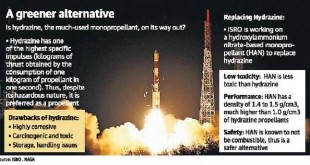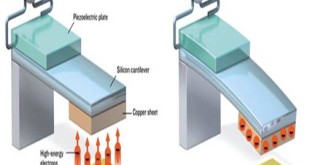Introduction: In recent years, the paradigm of space exploration has shifted towards sustainability, catalyzing the development of eco-friendly alternatives to traditional rocket propellants. One area witnessing transformative innovation is the development of green propellants for next-generation launch vehicles and spacecraft. Small satellites, particularly CubeSats, have emerged as pivotal platforms for …
Read More »Revolutionizing Underwater Warfare: The Evolution of Marine Propulsion Systems
In the realm of naval warfare, the effectiveness of a vessel often hinges on its propulsion system. From massive aircraft carriers to nimble autonomous underwater vehicles (AUVs), advancements in marine propulsion technology are reshaping the landscape of underwater warfare. In this article, we delve into the evolution of marine propulsion …
Read More »Embracing CO2: A Natural Refrigerant Revolutionizing Heating, Cooling, and Power Generation
For decades, our refrigerators and air conditioners have relied on synthetic refrigerants, some of which have been linked to environmental damage. But what if the answer to sustainable climate control was hiding in plain sight – the very gas we’re trying to reduce: carbon dioxide (CO2)? Embracing CO2 as a …
Read More »Navigating the Winds of Change: The Rising Tide of Wind Propulsion in the Marine Industry
The shipping industry is a lifeline of global trade, but its reliance on traditional fuels comes at a heavy environmental cost. Fortunately, wind propulsion is emerging as a powerful solution, offering a breath of fresh air for the future of maritime transport. The global marine propulsion engines market has experienced …
Read More »Empowering Mobile Forces: The Role of On-Board Vehicle Power (OBVP) in Military Operations
In today’s fast-paced battlefield environment, military vehicles must adapt to meet the escalating demands of modern warfare. With cutting-edge electronics and weapon systems placing unprecedented strain on power resources, traditional solutions are falling short. Enter On-Board Vehicle Power (OBVP), a game-changing technology poised to revolutionize military operations. As global concerns …
Read More »Harnessing Sunlight Indoors: Exploring the Potential of Indoor Solar Cell Technology
Solar panels have become synonymous with clean energy, basking in the sunshine to generate electricity for our homes and businesses. But what if we could harness the power of the sun even indoors? That’s the exciting promise of indoor solar cell technology, a field poised to revolutionize how we think …
Read More »Energy Storage Systems Breakthroughs: Paving the Way for a Sustainable Future
Introduction: The Intergovernmental Panel on Climate Change (IPCC) Sixth Assessment Report underscores the critical need for transformative action to address climate change. While there have been significant advancements in renewable energy sources like solar and wind—demonstrated by an 89% drop in solar energy prices over the past decade and the …
Read More »Harnessing the Power of Atomic or Nuclear Batteries: A Sustainable Solution for Future Energy Needs
In the quest for sustainable energy sources, researchers and innovators are turning to atomic, nuclear, or radioisotope batteries as potential game-changers. These advanced energy solutions not only offer promising applications in powering future IoT devices but also present a unique opportunity to address the challenge of nuclear waste disposal. Let’s …
Read More »Pioneering Sustainable Energy Solutions: The Dawn of Hydride Superionic Conductors
Introduction: In the pursuit of clean and renewable energy, scientists worldwide have long sought after efficient energy storage solutions. Superionic conductors promise clean, renewable energy — at the right temperatures. These conductors, used as solid electrolytes in batteries and fuel cells, comprise solid materials in which ions move as fast …
Read More »Advancing Aviation: The Rise of More Electric Aircraft (MEA) and All Electric Aircraft technologies
In recent years, the aviation industry has been undergoing a significant transformation driven by technological advancements and a growing emphasis on sustainability. One of the most promising developments in this regard is the emergence of More Electric Aircraft (MEA) and All Electric Aircraft (AEA). These innovative aircraft designs leverage new …
Read More » International Defense Security & Technology Your trusted Source for News, Research and Analysis
International Defense Security & Technology Your trusted Source for News, Research and Analysis





